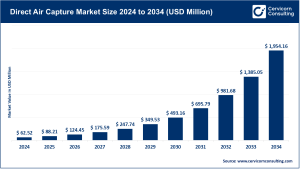E-Commerce Market Overview
The global e-commerce market was valued at USD 29.24 trillion in 2024 and is projected to reach approximately USD 97.63 trillion by 2034, registering a CAGR of 16.37% during 2025–2034. The market includes digital platforms that enable the online buying and selling of goods and services through B2C (Business-to-Consumer), B2B (Business-to-Business), C2C (Consumer-to-Consumer), and D2C (Direct-to-Consumer) models.
The sector’s growth is propelled by mobile commerce expansion, AI-driven personalization, same-day delivery models, and flexible payment solutions. Key players such as Amazon, Alibaba, and Walmart continue to dominate the market landscape, while small and mid-sized retailers increasingly utilize social media platforms to enhance visibility and drive sales. Additionally, emerging economies like India, Brazil, and Southeast Asian nations are witnessing rapid adoption fueled by growing smartphone use and the expansion of digital payment infrastructure.
👉 Get a Free Sample: E-commerce Market
Key Market Trends
1. Mobile Commerce (M-Commerce) Expansion
Mobile commerce represented 43.4% of total retail e-commerce sales in 2023 and is anticipated to hit USD 4.5 trillion by 2025. Retailers are increasingly optimizing mobile interfaces and integrating digital wallets such as Apple Pay and Google Pay, resulting in higher customer engagement and improved conversion rates.
2. User-Generated Content (UGC) Integration
User-generated content—reviews, ratings, photos, and testimonials—boosts purchase confidence, driving 20% higher conversion rates and 29% greater engagement. Leading retailers like Amazon and ASOS employ UGC as a trust-building mechanism to enhance customer authenticity.
3. Social Media Commerce (S-Commerce)
The social commerce segment reached USD 1.25 trillion in 2023 and is expected to double by 2026. Platforms such as Instagram, TikTok, and Facebook now support in-app purchases, encouraging impulse buying and direct customer interaction, particularly in developing regions.
4. Dynamic Pricing Strategies
AI-powered dynamic pricing enables companies to optimize revenue in real time. For example, Amazon adjusts prices up to 2.5 million times per day, resulting in a 25% increase in revenue and a 20% boost in profit margins.
Market Drivers
-
Rising Internet Penetration: Expanding internet connectivity continues to drive e-commerce accessibility across emerging economies.
-
Smartphone Proliferation: Increasing smartphone adoption facilitates convenient mobile shopping experiences.
-
Advancements in Digital Payments: Secure payment gateways and e-wallet systems streamline transactions.
-
Changing Consumer Behavior: Growing demand for personalized, fast, and convenient shopping solutions.
-
Pandemic-Driven Acceleration: COVID-19 restrictions significantly boosted global online shopping adoption.
Impact of Trends and Drivers
-
Regional Outlook: The Asia-Pacific region accounted for 45.2% of market revenue in 2024, followed by North America at 27.8%. Rapid digital transformation and mobile adoption are fueling the rise in developing economies.
-
Segment Insights: The B2C segment held the dominant 63.4% revenue share, with home appliances contributing 25.6% of total application revenue.
-
Application Areas: Growth in social commerce and UGC engagement is accelerating sales in fashion, electronics, and grocery sectors.
Challenges & Opportunities
Challenges:
-
Intense market competition among global and local players.
-
Data privacy and customer trust issues.
-
Logistical limitations in rural and remote areas.
Opportunities:
-
Expansion into underpenetrated emerging markets.
-
Adoption of AR/VR technologies, drone deliveries, and AI-driven personalization.
-
Growth in subscription-based and social commerce models.
Future Outlook
The e-commerce market is set for continued transformation, driven by advancements in artificial intelligence, mobile commerce, and immersive shopping experiences. Innovations in social commerce and personalized retailing will unlock significant opportunities for both global giants and emerging online retailers.
